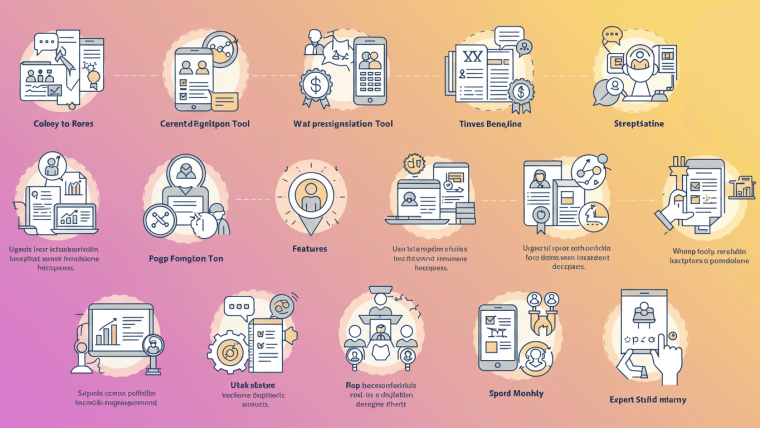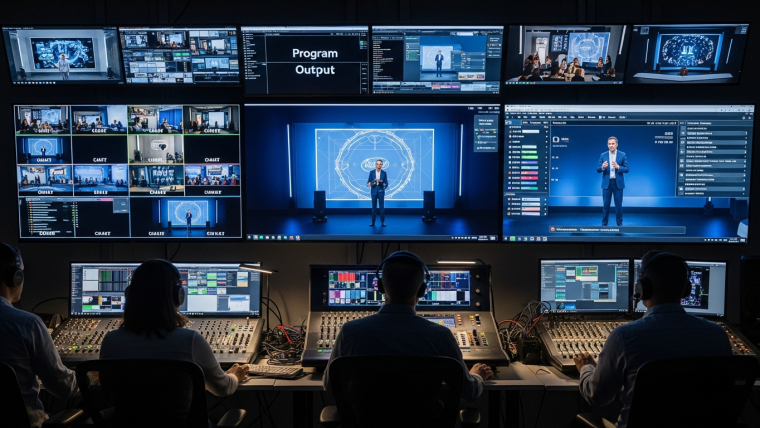Hybrid events are not just a trend; They are the future of the event industry. By combining purs and virtual elements, hybrid events provide unique flexibility, more access and the ability to tie the audience around the world. But a hybrid event requires more than a good idea of pulling. You need the right technique to detract from the difference between physical and digital participants.
This blog will detect the techniques required for hybrid events, from choosing the right event platform to using the participating engagement tool. Towards the end, you will have a roadmap to ensure that your next hybrid event is packed with a price for each participant.
Why Technology Is Crucial for Hybrid Events
The key to a great hybrid event is creating a unified experience for both in-person and virtual attendees. Imagine attending an event remotely where the audio frequently cuts out, or being at the physical venue and feeling disconnected from what’s happening online. Technology bridges these gaps, ensuring:
- Seamless live streaming and clear communication.
- Equal engagement opportunities for all attendees.
- Data collection and reporting to measure event success.
With the right equipment, it can be inclusive, interactive and productive for anyone involved in the hybrid event. In addition, hybrid events may also offer unique experiences and opportunities that may not be able to provide traditional commercial or virtual events.
Such an experience has the opportunity to switch between physical and virtual environments for participants. This provides more flexibility and convenience, as the attendees can choose how they want to participate on the basis of their needs and preferences. For example, a participation may prefer to networks with others during a break, but then switch to a virtual session for a presentation or workshop.
Hybrid events have the opportunity to reach larger target groups than traditional unconventional events. With virtual appearance options, people who may not be able to participate in an event due to lack of space, travel costs or due to lack of space
Must-Have Technology for Hybrid Events
Technology plays a crucial role in the success of hybrid events. Whether you are an event planner or attendee, it is important to understand the must-have technology for hybrid events. Here are some essential technologies that can make your hybrid event experience seamless and engaging.
1. Reliable Event Platforms
Your event platform is the backbone of your hybrid event. It’s where virtual attendees log in, where content is delivered, and where connections are made. A good hybrid event platform allows virtual attendees to feel as though they are just as much part of the event as those in the physical venue.
Key Features to Look For:
- Video streaming and recording capabilities for live and on-demand content.
- Interactive tools like polls, Q&A, and chat functions.
- Networking features such as virtual breakout rooms or attendee matchmaking.
- Analytics to measure attendee behaviors, such as session attendance or engagement rates.
Top Platforms to Consider:
- Hopin for an immersive virtual environment.
- Whova for its versatile attendee engagement tools.
- Cvent for its end-to-end event management capabilities.
2. High-Quality Audiovisual Equipment
For in-person attendees, hearing and seeing event content clearly is essential. The same goes for virtual participants. Poor audio or video quality can ruin the attendee experience faster than anything else.
What You Need:
- Microphones with excellent audio pickup for speakers and audience interactions.
- Cameras with 4K or HD resolution for clear, high-quality visuals.
- Lighting kits to ensure speakers are well-lit for camera recordings.
- AV technicians who can troubleshoot and monitor equipment in real-time.
When combined with robust streaming software like Zoom or Vimeo, high-quality AV equipment guarantees that both on-site and virtual attendees enjoy the same top-notch experience.
3. Audience Engagement Tools
The best hybrid events keep their audiences hooked, whether they’re sitting in a ballroom or on a couch at home. Audience engagement tools ensure everyone feels involved.
Popular Tools to Use:
- Live Polling (Slido, Mentimeter): Polls can spark discussions and get instant feedback from attendees, on-site or remote.
- Q&A Features (Pigeonhole Live): Enable attendees to ask questions and address them during sessions.
- Gamification (Kahoot, EventMobi): Incorporate quizzes, challenges, or scavenger hunts throughout the event to build excitement and interaction.
Engagement features aren’t just nice-to-haves; they’re what turn passive viewers into actively participating attendees.
4. Virtual Reality and Augmented Reality for Immersive Experiences
Want to take your hybrid event to the next level? Consider including AR and VR technologies. While not a requirement for every event, they can create memorable, immersive experiences that captivate attendees.
Applications:
- Virtual Reality Tours: Ideal for trade shows or expos, allowing remote attendees to explore booths and exhibits as if they were there.
- Augmented Reality Features: Enable on-site attendees to interact with 3D graphics, and virtual attendees can use mobile AR capabilities for similar experiences.
Platforms like VirBELA and Engage VR specialize in virtual event venues for hosting AR/VR-enhanced hybrid events.
5. Registration and Ticketing Software
Managing hybrid attendance requires smooth registration and ticketing processes. This starts with software that can handle registrations for both in-person and virtual attendees while streamlining the payment process.
Must-Have Features:
- Customizable ticket options that cater to both virtual and in-person attendees.
- Automated email reminders for important event updates.
- Integration with marketing platforms to sync attendee data seamlessly.
Platforms like Eventbrite and Bizzabo are dependable options that simplify registration without compromising on functionality.
6. Security and Privacy Measures
Hybrid events involve large amounts of data, from personal attendee information to sensitive recorded content. Ensuring your event platform and tools are secure should be a top priority.
Important Considerations:
- Use secure payment gateways to process ticket purchases.
- Ensure your event platform complies with GDPR or similar data protection laws.
- Set up restricted access to event content with personalized login credentials.
Cyber breaches aren’t just a risk; they can tarnish your brand’s reputation, so invest in technology that guarantees security.
7. Analytics and Reporting Tools
After the final session ends, the value of a hybrid event lies in its data. Analytics tools allow you to measure success, understand attendee behaviors, and improve future events.
Metrics to Track:
- Attendance rates for both in-person and virtual participants.
- Engagement levels (poll participation, Q&A activity, etc.).
- Content consumption (e.g., how many attendees downloaded session materials).
Tools like Tableau or Google Analytics integrate seamlessly to provide real-time and post-event data, giving you insights to refine upcoming events.
Crafting a Seamless Hybrid Event Experience
Hybrid events are more than a combination of physical and virtual elements. Success is to ensure that both viewers must feel equally valuable and connected. The technology acts as a bridge, which creates harmonious, attractive and impressive experience.
By investing in the right equipment platforms from Family-from family to top modern AR/VR skills and solid AV equipment, you can provide an event that exceeds expectations for each participant.
Remember that the technique you choose forms. Start small, prioritize simplicity and scale as you gain more confidence with hybrid events.








Webinar Analytics: A Complete Guide to Measuring Success and Improving Performance
The Ultimate Webinar Follow-Up Strategy to Turn Attendees into Customers
Webinar Accessibility Best Practices: How to Make Your Online Events Inclusive for All
Webinar Personalization: Tailoring Content to Audience Segments for Maximum Engagement